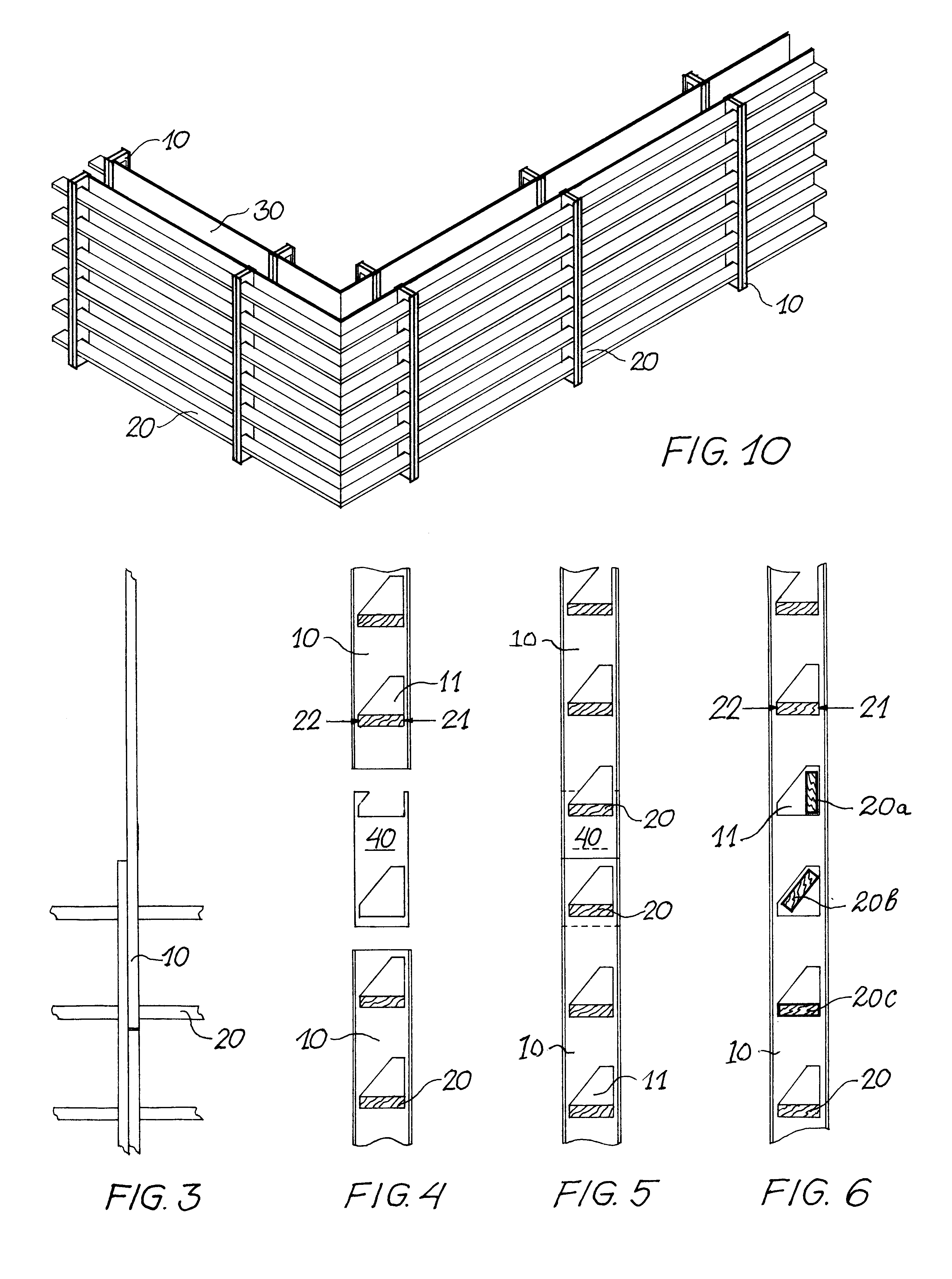Sub-rigid fast-form barrier system
a fast-form barrier and rigid technology, applied in the field of rigid fast-form barrier systems, can solve the problems of affecting the variable cost of labor of every nail, screw, nut&bolt, compound wedge,
- Summary
- Abstract
- Description
- Claims
- Application Information
AI Technical Summary
Benefits of technology
Problems solved by technology
Method used
Image
Examples
Embodiment Construction
The Sub-Rigid Fast-Form Barrier System, disclosed herein, is remarkable in its simplicity and promises wide commercial application as the labor costs for construction become increasingly prohibitive.
In the world today time is money and the erection speed this system offers may well revolutionize conventional "post and beam" framing while transforming platform framing to a fast-form barrier system.
The invention is specifically aimed at calculated beam loading where barriers may be economically fabricated to withstand hurricane force winds. While the tie down system for housing walls and roofs is nothing novel, the tie-downs in concert with this fast-form system offers an economical composition that can easily increase or decrease the size of tys to meet estimated standard or eccentric loading. The fast-form system will offer insurance companies an insurable building procedure for any and all applications. When the barriers disclosed herein are utilized as concrete formwork, contracto...
PUM
 Login to View More
Login to View More Abstract
Description
Claims
Application Information
 Login to View More
Login to View More - Generate Ideas
- Intellectual Property
- Life Sciences
- Materials
- Tech Scout
- Unparalleled Data Quality
- Higher Quality Content
- 60% Fewer Hallucinations
Browse by: Latest US Patents, China's latest patents, Technical Efficacy Thesaurus, Application Domain, Technology Topic, Popular Technical Reports.
© 2025 PatSnap. All rights reserved.Legal|Privacy policy|Modern Slavery Act Transparency Statement|Sitemap|About US| Contact US: help@patsnap.com



